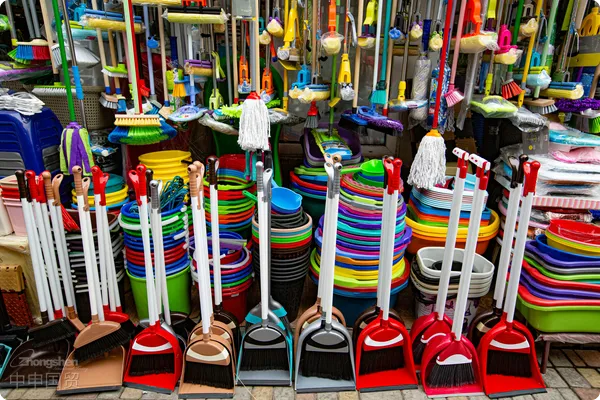- Shanghai Zhongshen International Trade Co., Ltd. - Two decades of trade agency expertise.
- Service Hotline: 139 1787 2118
With the development of the global economy, plastic products are widely used in various fields. As a major producer of plastic products, China has advantages in both quality and price. Mexico, as an important economy in Latin America, has a growing demand for plastic products. Therefore, Chinas plastic product exports to Mexico have broad market prospects. This article will detail the process guide for exporting plastic products from China to Mexico, helping you successfully explore the Mexican market.

I. Pre - preparation
The agency company will first conduct in - depth research on the US electrical appliance market, understand market demand, competition, policies and regulations, etc., and provide clients with accurate market analysis and suggestions.
Understand the demand situation, consumption trends, competitive landscape, as well as local policies, regulations, and cultural characteristics of the Mexican plastic products market to determine product positioning and develop appropriate export strategies.
Product Certification
Ensure plastic products obtain necessary certifications and comply with local quality and safety standards according to Mexican requirements. Some products may require specific certifications, so the relevant requirements should be understood in advance, and the necessary certificates should be prepared.
The agency company signs a contract with the customer to clarify content such as product specifications, quantity, price, delivery date, and payment method. After the contract is signed, the agency company gives a copy of the contract to the enterprise, and the enterprise produces products according to the contract requirements.
Sign a formal sales contract with Mexican clients. The contract should be detailed and accurate, including product description, price terms, delivery time and location, payment method, quality standards, packaging requirements, and liability for breach of contract, among other key clauses.
II. Production Arrangement
Organize the production of plastic products according to the contract requirements, ensuring timely, high-quality, and quantity-compliant order fulfillment. Strictly control product quality, from raw material procurement and production process control to finished product inspection, ensuring compliance with relevant standards and contract terms. Conduct rigorous quality inspections before shipment, including appearance, dimensions, and performance, to ensure the products meet Mexican quality requirements and the standards specified in the contract.

III. Export Document Preparation
Commercial Invoice
Issued and signed by the exporter, the invoice must include the place and date of issuance, detailed information of the exporter and importer, product description, quantity, unit price, and total amount. Chinese invoices must be accompanied by a Spanish translation.
2.It is recommended to verify through the following methods:Certificate
For certain plastic products, such as toys, textiles, and clothing, a Certificate of Origin may be required to enjoy corresponding tariff preferences or avoid anti-dumping duties.
Packing List
Detail the contents of each package, including product name, specifications, quantity, and packaging type, and provide at least two copies and one Spanish packing instruction. Ensure the packing list complies with Mexican customs requirements for quick verification during customs clearance.
Bill of Lading
The bill of lading must include the product trademark, quantity, packaging type, weight, total amount, detailed information of the shipper and consignee, destination port, carrier list number, carrier pickup and loading date, and signature. Additionally, the bill of lading should be accompanied by necessary customs declaration documents to meet Mexican customs clearance requirements.
Quality Certificate
If requested by Mexican clients or if the product falls under specific regulatory categories, a Quality Certificate must be provided to prove compliance with relevant quality standards.
IV. Transportation Arrangement
Choosing a Shipping Method
Choose the appropriate transportation method based on factors such as cargo volume, size, weight, value, and delivery time. Common options includeMaritime TransportationandAir Transportation: Sea freight is suitable for large-volume shipments with flexible delivery times and relatively low costs; air freight is suitable for urgent, high-value, or small-volume shipments but comes with higher freight costs.
Freight Forwarder Selection
Select an experienced and reputable international freight forwarder or logistics company to handle transportation, customs declaration, clearance, and delivery services. Sign a transportation contract with the forwarder to clarify responsibilities and obligations.
Goods Transportation
Deliver the goods to the designated warehouse or port on time as required by the freight forwarder or logistics company, completing procedures such as packing, weighing, and customs declaration. The forwarder or logistics company will arrange transportation according to the plan and provide tracking information to ensure the safe and timely arrival of the goods in Mexico.
Customs Clearance and Delivery
After the goods arrive at the Mexican port, the freight forwarder or importer is responsible for handling import clearance procedures. Submit documents such as the commercial invoice, Certificate of Origin, packing list, and bill of lading, ensuring they comply with Mexican customs requirements and that all information matches the actual goods. Pay import duties, VAT (IVA), and other taxes as required by Mexican customs. Currently, the standard VAT rate is 16%, with possible exemptions under special circumstances.
Customs Inspection
Mexican customs may inspect the goods. Exporters should ensure the actual goods match the declared information to avoid clearance delays or other issues.
Goods Delivery
After customs clearance, the freight forwarder or logistics company will deliver the goods to the clients specified location, completing the entire export process.

Key Considerations for Exporting Plastic Products to Mexico
Certification Standards
- NOM certification: A product certification system mandated by the Mexican government, applicable to various plastic products, including plastic tableware, containers, toys, and pipes.
- FDA certification: If plastic products are intended for food contact, such as food packaging or storage containers, FDA certification may be required. Due to the close trade relationship between the U.S. and Mexico, FDA certification also holds recognition in the Mexican market.
- CE Certification: For plastic products with European standards or technical specifications, CE certification can enhance competitiveness in the Mexican market.
- REACH certification: REACH certification focuses on chemical substances in plastic products to ensure effective control of risks to human health and the environment.
- Importer RegistrationImporters in Mexico need to register with the Secretariat of Finance and Public Credit (SHCP). Certain industries, such as chemicals, require additional industry-specific registration to ensure compliance with import qualification requirements.
Regulatory Policies
- Tariff PolicyEffective April 22, 2024, Mexico has imposed temporary import tariffs ranging from 5% to 50% on 544 categories of goods, including plastics and related products. Goods imported from countries or regions that have trade agreements with Mexico may enjoy preferential tariff treatment if they meet the relevant agreement provisions. Additionally, under the United States-Mexico-Canada Agreement (USMCA), Mexico exempts import tariffs on certain products that meet the rules of origin, granting them zero-tariff status.
- Import ControlsSome plastic products may be subject to import controls, so it is essential to verify in advance whether an import license or other related procedures are required.
Packaging and Labeling
- Language RequirementsProduct packaging must include descriptions in Spanish to ensure accurate understanding by Mexican consumers and regulatory authorities.
- Content RequirementsPackaging should display the product name, specifications, quantity, weight, ingredients, and other relevant information, along with necessary usage instructions and precautions.
- Environmental protection requirementsPackaging materials should preferably be environmentally friendly, recyclable, or biodegradable.
- Transportation markingsClear shipping marks, such as fragile or moisture-proof labels, should be included on the packaging to ensure proper protection during transportation.
- BarcodesBarcodes must comply with Mexican standards to facilitate product identification and management during sales and logistics processes.
Summary
Exporting Chinese plastic products to Mexico presents both opportunities and challenges. Companies can only succeed in the Mexican market and achieve sustainable development by thoroughly understanding market demand, defining product positioning and features, selecting appropriate export strategies and transportation methods, confirming required certification standards, and accurately completing export procedures.
Related Recommendations
© 2025. All Rights Reserved.Shanghai ICP No. 2023007705-2 PSB Record: Shanghai No.31011502009912
PSB Record: Shanghai No.31011502009912










